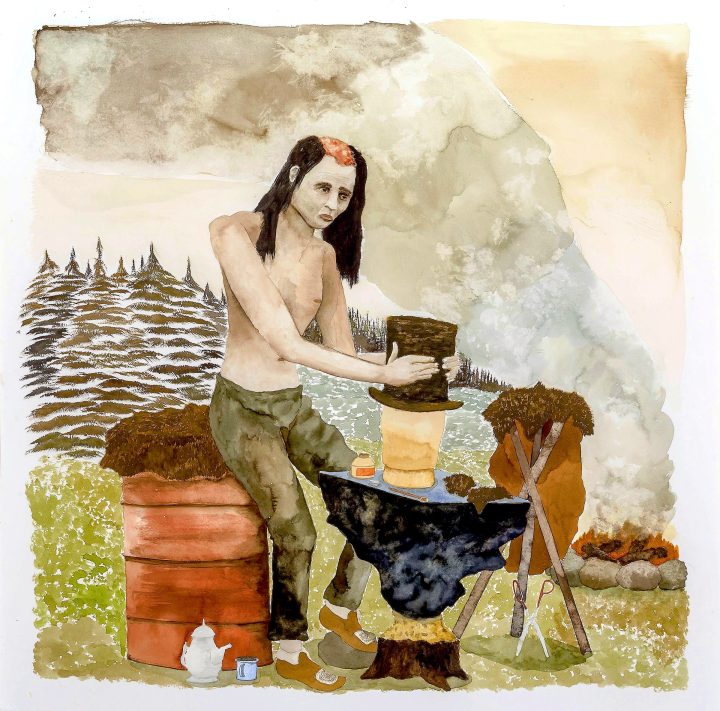
In late March, an article ran in the Vancouver Sun, a mainstream newspaper owned by Canadian media conglomerate Postmedia, about the recent revelations of an institutional curator’s Indigenous ancestry being completely fabricated. This latest revelation was following a string of high profile cases in Canada including director Michelle Latimer, author Joseph Boyden, poet Gwen Benaway, as well as numerous others, often with academic affiliations. More recently, the New York Times Magazine published an engrossing read on scholar Andrea Smith and how someone can publicly, for decades, be highly regarded as a respected anti-racist Indigenous feminist and as an ethnic fraud.
In all of the aforementioned examples, the issue that gets lost behind questionable genealogy and family lore, is how ethnic fraud requires the full participation of the predominantly White cultural and academic institutions who hire them, protect them, and in many instances, prefer them.
When news initially broke that someone many of us knew was, after all, a White woman of European descent who had applied for and received over $100,000 CAD in what was then called Aboriginal arts funding, the responses ranged from outrage, to confusion and complicity. Intimacy and camaraderie run deep since Canada may be geographically vast, but its population size and proximity to the United States keeps its conversations small. After months of being called in by local Indigenous arts professionals to account for her identity claims, and being unable to, the curator shifted back to a “settler” identity via a biography update on her blog.
For many, including Simon Fraser University, her employer, that was the end of the story. From the Vancouver Sun’s reporting, SFU dismissed the situation by explaining cheyanne turions “was hired based on her experience in the art community, not her ancestry.” This response ignored the glaring fact that her professional experiences, including numerous industry awards, were built in an echo chamber of false claims under the leaky colonial logics of “self-identification.” Indigeneity in the art world is often reduced into a reified identity for personal and institutional credibility, when in reality, and in the words of Sisseton-Wahpeton Oyate scholar Kim TallBear, “‘identity’ is a poor substitute for relations.”

Deeply informed by conversations with local and national artists and curators with relational ties to their Indigenous communities, a few of us began looking into some of the more egregious professional experiences one acquires through a decade of ethnic fraud. Combing through the miasma of institutional documents, we could plainly see how complex relations of power are filtered through the bureaucracy of diversity until they are reduced to percentage points and lip service. What became disturbingly clear is the exuberant complicity of many senior leaders inside of these institutions who held up and championed a White woman who showed interest in “decolonization” as their go-to Indigenous arts person.
Canada’s public funding for the arts is more in line with the British public funding model than a US American philanthropic one. National, provincial, and municipal levels of public funding for the arts prop up the majority of the country’s professionally recognized institutions and individuals. There are countless grants ranging from travel funds to multi-year programs that the majority of artists and organizations have grown to rely upon, and cannot easily wean themselves off. In the case of project or residency grants awarded to individual curators, these require the administrative support of a host institution, which as a cash-strapped, understaffed arts organization, is usually more than happy to have a fully or partially paid staff person to offset operating expenses.
Increasingly, there have been funds specially reserved for diversity and Indigenous arts. These dedicated funds are meant to reach systemically underserved and underrepresented groups in an overwhelmingly ableist and Western Eurocentric cultural imaginary. In turn, publicly funded institutions now find greater incentive to diversify, checking boxes in their programming audits and final reports, which in and of itself, doesn’t have to be opportunistic. But performance measures can easily prioritize the bureaucracy of diversity by quantifying its value, sometimes even driving it, without ever stopping to consider how this supposed diversity is reflective of or accountable to the communities they are claiming to serve or represent.
As an example, through research first publicly shared by No More Red Face, an anonymous Twitter account, turions received three grants under Canada Council for the Art’s now defunct assistance to Aboriginal Curators for Residencies in the Visual Arts. The first of these grants supported her yearlong 2010–2011 curatorial residency at Gallery TPW, a photo-based gallery in Toronto in partnership with Images Festival, a moving-image festival (where I was the artistic director between 2015–2017). Former colleagues could not recall whether it was the individual or the organization who suggested the grant, but what is clear is how someone’s Indigenous identity was here legitimized via a successful arts grant.
Like most ethnic frauds in public positions, turions’ material gains and cultural ascendency compounded after this. Many prestigious institutions wanted to work with her, often as the “Indigenous” voice in the room, including the University of Toronto’s Art Museum, who recruited her to their Masters of Visual Studies program and featured her as their 2016 “Aboriginal” curator-in-residence in a final report on the university’s response to reconciliation. The year after that, the Vancouver Art Gallery hired her as their director of education and public programs, highlighting her Indigenous ancestry and projects as a “meaningful” way to engage with “diverse audiences.”
The economic gains of ethnic fraud cannot be understated. Ingrained racism has allowed predominantly White institutions to materially benefit from Indigeneity, especially in an era of reconciliation, by preferring to work with “Indigenous” people who look, act, and think like them, because in reality they are them.
So what does it mean when institutions try to address systemic inequalities, but continue to prioritize whiteness over and over again?
From here, it looks a lot like colonization, where White settlers lose nothing and gain everything, encroaching and replacing Indigenous people, knowledge, and spaces with only themselves.
0 Commentaires